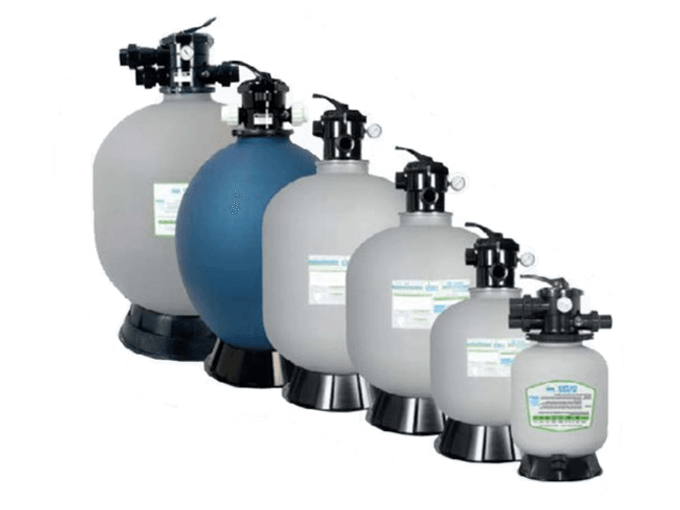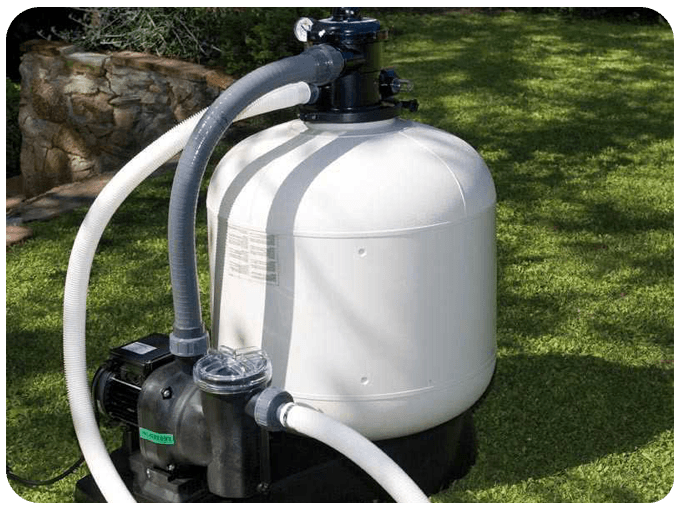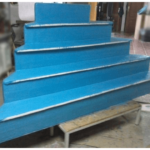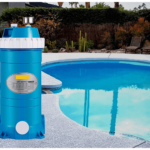In the vast world of purification and filtration, sand filters stand out as an essential tool for various applications. From drinking water treatment to purification in pools and spas, these devices play a crucial role. In this comprehensive guide, we will explore the definition, types, filtration process, practical applications, advantages, considerations for selection, and much more.
Table of Contents
Types of Sand Filters
High-Rate Sand Filters
These filters are characterized by their efficiency in retaining particles at high speed. They are ideal for applications where a continuous flow of purified water is needed.
Slow Sand Filters
Unlike high-rate filters, these filters operate at a slower speed, allowing for more effective retention of impurities. They are commonly used in environments where water quality is crucial.
Filtration Process
The core of sand filters lies in their ability to capture impurities. As water passes through the filter medium, particles are trapped, ensuring cleaner and safer water. We will also discover best practices for maintenance and cleaning.
- Regular inspection:
- Perform periodic inspections of the filtration system to detect potential issues such as leaks, blockages, or component damage.
- Chemical control:
- Maintain appropriate levels of chemicals in pool water to prevent algae and bacteria formation, reducing the filter’s workload.
- Skimmer and pump basket cleaning:
- Regularly clean the skimmer and pump baskets to remove leaves, insects, and other debris that could obstruct water flow to the filter.
- Sand filter backwashing:
- Schedule sand filter backwashing at regular intervals to remove accumulated dirt in the filter medium. Follow manufacturer recommendations for the proper backwashing procedure.
- Filter medium replacement:
- Change the sand filter medium as per manufacturer instructions or when you notice a decrease in filtration efficiency.
- Water level control:
- Keep the pool water level within recommended limits to ensure optimal filtration system operation.
- Weather protection:
- Protect filtration equipment from direct exposure to sun and rain using covers or structures that provide shade and protection.
- Pump motor maintenance:
- Perform regular maintenance on the pump motor, including bearing lubrication and fan cleaning, to ensure smooth and efficient operation.
- Attention to leaks:
- Pay attention to any signs of leaks in the filtration system and repair them promptly to prevent major damage and water loss.
- Preventive maintenance program:
- Establish a preventive maintenance program that includes all necessary tasks to ensure optimal filtration system operation over time.

Practical Applications
From supplying drinking water to use in the food industry, sand filters find applications in a variety of sectors. Explore how these devices contribute to water quality in different contexts.
- Pools and spas: In the recreation and entertainment sector, sand filters are widely used in pools and spas to remove particles, sediments, algae, and other contaminants from water, keeping it clean and safe for human use.
- Drinking water treatment: In drinking water supply, sand filters play a crucial role in removing suspended solids, microorganisms, and organic compounds that may affect water quality. They help produce clean and safe drinking water for human consumption.
- Agriculture: In agriculture, sand filters are used to filter water used in irrigation systems, removing particles and sediments that could clog irrigation emitters and affect system efficiency.
- Industry: In various industrial processes, sand filters are employed to treat water used in production, cooling, and other purposes. They help remove impurities and contaminants to ensure water quality and protect industrial equipment.
- Wastewater treatment: In wastewater treatment, sand filters are used in pretreatment stages to remove suspended solids, fats, and other contaminants before water proceeds to more advanced treatment processes.
The contribution of sand filters to water quality in these contexts is due to their ability to trap and retain particles and contaminants present in water. This helps reduce turbidity, remove pathogenic microorganisms, improve water taste and odor, and protect distribution systems and associated equipment.
Advantages of Using Sand Filters
Particle Retention Efficiency
The ability of sand filters to retain particles of various sizes ensures effective water purification.
Durability and Lifespan
Discover why these filters are recognized for their durability and long lifespan, providing consistent performance over time.
Considerations for Selection
When selecting a sand filter, factors such as size, capacity, filter medium, and maintenance requirements are key. Understand how to choose the right filter for your specific needs.
- Pool or water system size: The sand filter size should be appropriate for the volume of water you need to filter. A larger pool will require a higher capacity filter to ensure efficient filtration.
- Flow rate and filtration speed: You should consider the water flow rate of your system and ensure that the sand filter can handle it properly. Additionally, filtration speed should be optimal to ensure effective filtration without excessive wear on the filter medium.
- Type of filter medium: Sand filters can use different types of filter media, such as silica sand, crushed glass, or zeolite. Choose the most suitable filter medium based on water characteristics and personal preferences.
- Filtration efficiency: Consider the filtration efficiency of the sand filter, i.e., its ability to remove particles and contaminants from water. Look for filters with high filtration efficiency to ensure that the water remains clean and safe.
- Maintenance and cleaning: Evaluate the ease of maintenance and cleaning of the sand filter. The filter medium should be easily accessible for periodic washing and replacements when necessary, without requiring complicated maintenance.
- Durability and construction quality: Opt for sand filters made from durable, high-quality materials that can withstand exposure to water and environmental elements over time without deteriorating.
- Compatibility with existing system: Ensure that the sand filter is compatible with the plumbing system and existing pumps in your pool or water system to avoid installation and operational issues.
- Price and budget: Consider your available budget and compare prices among different sand filter options. Look for a balance between cost and quality to get the best value for your money.
Technological Innovations
It’s interesting how recent innovations in filter materials and automated systems are taking sand filter efficiency to new levels. In recent years, notable advances in sand filters have been driven by innovations in filter materials and automated systems. Alternative filter media such as crushed glass and zeolite have been developed, offering more effective filtration and improved particle retention.
Moreover, automated control systems allow for optimal adjustment of filter operation parameters, while improvements in backwashing systems reduce water wastage. Integration with advanced technologies like artificial intelligence and IoT (Internet of Things) offers enhanced remote monitoring and control, predictive analytics, and real-time performance optimization, making sand filters more efficient, reliable, and appealing for various water treatment applications.
Sand Filters at Home
Domestic Filtration Systems
How can your home benefit from a sand filtration system? Discover available options and their health benefits for your family.
- Sand filters for pools: Installing a sand filter in your home pool can keep the water clean and clear by removing sediments, particles, and contaminants. This not only enhances pool aesthetics but also creates a more hygienic and safe environment for your family to enjoy the water.
- Sand filters for drinking water supply: If your home relies on well water or other sources with impurities, consider installing a sand filter for drinking water supply. These filters can remove suspended solids, sediments, and microorganisms, providing clean and safe water for drinking and cooking.
- Sand filters for wastewater treatment: If you have a wastewater treatment system at home, a sand filter can help remove solids and contaminants before water is discharged into the environment. This can reduce the risk of soil contamination and infiltration of contaminants into groundwater, thereby protecting public health and the environment.
- Sand filters for irrigation systems: If you have a garden or crops at home that depend on irrigation systems, consider installing a sand filter in the system to remove particles and sediments that could clog irrigation emitters. This ensures uniform water distribution and promotes healthy plant growth.
- Sand filters for laundry and shower water treatment: Installing a sand filter in your home water supply line can help remove chlorine, sediments, and other contaminants that may affect the quality of laundry and shower water. This can improve skin and hair health, reducing irritation and dryness.

Positive Environmental Impact
From reducing chemical consumption to contributing to sustainability, we will analyze the positive environmental impact of sand filters.
- Reduced chemical use:
- Sand filters can reduce the need for using chemicals in water treatment, as they can remove a wide range of contaminants, including sediments, particles, microorganisms, and organic compounds. This means fewer chemicals released into the environment, reducing pollution and negative impacts on aquatic ecosystems.
- Water conservation:
- By efficiently filtering water, sand filters can help conserve this vital resource by reducing the amount of water wasted due to turbidity or contamination. This is especially important in regions where water is scarce or experiencing water stress, as it allows for more efficient and sustainable use of available water.
- Protection of water quality:
- By removing sediments, particles, and contaminants from water, sand filters help protect water quality in rivers, lakes, and groundwater bodies. This benefits aquatic ecosystems and wildlife that depend on clean and healthy water supply.
- Reduction of soil pollution:
- By filtering wastewater before its release into the environment, sand filters can help prevent soil pollution and infiltration of contaminants into groundwater. This is crucial for protecting soil quality and groundwater resources, as well as maintaining the health of terrestrial and aquatic ecosystems.
- Lower energy consumption:
- Compared to other water treatment methods that require high levels of energy, such as desalination or purification through advanced chemical processes, sand filters tend to be more energy-efficient. This contributes to reducing greenhouse gas emissions and mitigating climate change by decreasing the energy demand associated with water treatment.
Common Questions about Sand Filters
How Do Sand Filters Work?
Discover the principle behind sand filter operation and how they achieve effective water purification.
What are the Health Benefits?
Explore the health benefits associated with using sand filters in domestic and public settings.
Can I Install a Sand Filter in my Pool?
Find out if sand filters are the right choice to keep your pool clean and safe for the whole family to enjoy.
Are They Suitable for Drinking Water?
Assess the suitability of sand filters in drinking water supply and how they contribute to water safety.
What is the Typical Lifespan of a Sand Filter?
Get information on the expected lifespan of a sand filter and how to maximize its lifespan.
Conclusion
In summary, sand filters play an irreplaceable role in water purification across various applications. From their effectiveness in particle retention to their positive impact on the environment.


